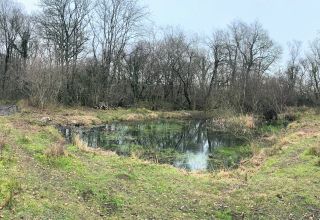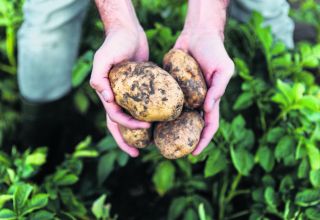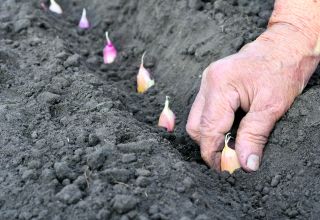For too often this super food berry has had a reputation of being troublesome – needing acidic soil, cross pollination and patience before you get the first fruit – but it is worth the effort
Growing blueberries isn’t as difficult as many would make out. They do certainly prefer an acid soil in a nice sunny or semi shaded position. And even if your garden soil is not acidic then you can try growing blueberries in containers using an ericaceous compost mix.
It’s certainly worth the effort. Blueberries are delicious and extremely high in antioxidants which is why they are so often branded as a super food.
Getting the pH level is critical but not too difficult. The pH should be at least as low as 5.5 and if your soil is alkaline (above 6.0) then you need to add ericaceous compost, preferably loam based.
One top tip to remember is that like all acid loving plants, blueberries are best watered with rainwater whenever possible as tap water can make the compost more alkaline over time.
There are several different forms.
The main blueberry type is the northern highbush blueberry (Vaccinium corymbosum) which is very hardy, has large fruits and high yields. It needs a significant period of winter cold to initiate flowers and therefore fruit.
While some cultivars can set a fair crop on their own, all yield much heavier if planted near to another different cultivar. Flowering can occur early or late in the spring depending on the variety. When you buy a plant make sure they have multiple shoots at the base. If growing them in garden soil add plenty of organic matter such as pine needles or composted conifer clippings. Avoid farmyard manure, as this is too rich and will scorch them.
Space plants at least three feet apart to allow for their spread.
If you are going to use a pot plant then it needs to be at least 15 inches wide to allow for the fruit to develop.
Pruning blueberries is really straightforward once you know what you are trying to achieve. The idea is to ensure that your plant always has a good selection of productive young red stems with plenty of fat fruiting buds. These buds are much rounder than the vegetative buds so you can easily tell which stems will produce the most fruit. It’s the two-year-old wood that is most productive.
Cut back the just very oldest stems to ground level each year to encourage new stems to be produced – creating a constant process of rejuvenation.
Growing blueberries – the facts
• Blueberries can take three to four years before they will produce fruit.
• Blueberries also produce better if they are cross-pollinated. This means that growing blueberry bushes of different varieties will help with their production.
• Native to North America, blueberries grow best in acidic soil well composted and organic soil. They’ are in fact perfect for organic gardeners since they can easily be grown without pesticides.
• March and April are ideal months to place new blueberry plants in the ground because of winter threat of frosts, but make sure the ground has thawed before planting.
• They do well in pots and you can get a reasonable crop whatever the size of your garden.











